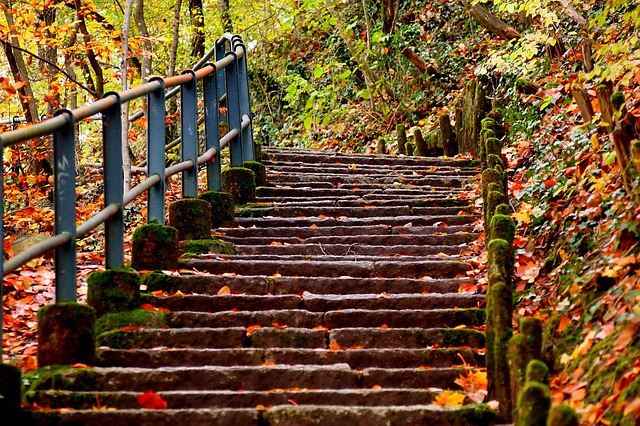Guardrail
A rail is a longitudinal bar that can sit on uprights or can be attached to another structural component such as a wall. A guardrail is a longitudinal barrier that prevents people from falling or straying into a dangerous or restricted zone. Guardrails are typically made from metal, timber, or materials such as PVC.
Guardrails can be found in locations such as:
- On a balcony.
- On building sites.
- On the edge of a pavement to prevent pedestrians crossing roads at dangerous points.
- On the edge of a ramp.
- On a landing.
- On ships.
- Around potentially dangerous machinery.
- Along a hiking trail to prevent falls.
Guardrails typically have ergonomic dimensions, with the top rail around 107cms (+/- 8cms) above ground level.
NB According to Approved Document K, Protection from falling, collision and impact, guarding is ‘…a barrier that denies pedestrians or vehicles access to another area, for example the floor below’. Where a barrier is ‘…a structure – either a raised rail or a solid wall – that denies access to another area.' For more information see: Guarding
[edit] Related articles on Designing Buildings Wiki
Featured articles and news
Government consultations for the summer of 2025
A year of Labour, past and present consultations on the environment, the built environment, training and tax.
CMA competitiveness probe of major housing developers
100 million affordable housing contributions committed with further consultation published.
Homes England supports Greencore Homes
42 new build affordable sustainable homes in Oxfordshire.
Zero carbon social housing: unlocking brownfield potential
Seven ZEDpod strategies for brownfield housing success.
CIOB report; a blueprint for SDGs and the built environment
Pairing the Sustainable Development Goals with projects.
Types, tests, standards and fires relating to external cladding
Brief descriptions with an extensive list of fires for review.
Latest Build UK Building Safety Regime explainer published
Key elements in one short, now updated document.
UKGBC launch the UK Climate Resilience Roadmap
First guidance of its kind on direct climate impacts for the built environment and how it can adapt.
CLC Health, Safety and Wellbeing Strategy 2025
Launched by the Minister for Industry to look at fatalities on site, improving mental health and other issues.
One of the most impressive Victorian architects. Book review.
Common Assessment Standard now with building safety
New CAS update now includes mandatory building safety questions.
RTPI leader to become new CIOB Chief Executive Officer
Dr Victoria Hills MRTPI, FICE to take over after Caroline Gumble’s departure.
Social and affordable housing, a long term plan for delivery
The “Delivering a Decade of Renewal for Social and Affordable Housing” strategy sets out future path.
A change to adoptive architecture
Effects of global weather warming on architectural detailing, material choice and human interaction.
The proposed publicly owned and backed subsidiary of Homes England, to facilitate new homes.
How big is the problem and what can we do to mitigate the effects?
Overheating guidance and tools for building designers
A number of cool guides to help with the heat.
The UK's Modern Industrial Strategy: A 10 year plan
Previous consultation criticism, current key elements and general support with some persisting reservations.
Building Safety Regulator reforms
New roles, new staff and a new fast track service pave the way for a single construction regulator.

























